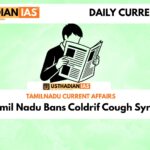Alarming Statistics: India Leads in Global Snakebite Fatalities
Snakebite Deaths in India: The Silent Public Health Crisis: India records nearly 58,000 snakebite-related deaths each year, accounting for almost half of the global total. Despite being the world’s largest producer and consumer of antivenoms, delays in treatment, poor access in rural regions, and gaps in infrastructure make the fight against snakebite envenoming a critical health concern.
Global Overview and WHO Classification
According to the World Health Organization (WHO), approximately 5.4 million people suffer snakebites worldwide each year, with 1.8 to 2.7 million cases involving venom exposure. The annual death toll ranges from 81,000 to 137,000, while thousands more suffer from permanent disabilities or amputations. Recognising its devastating impact, the WHO has classified snakebite envenoming as a high-priority neglected tropical disease.
India’s Unique Snake Diversity and Risk Zones
India is home to over 300 snake species, with more than 60 identified as venomous. The so-called “Big Four”—Indian cobra, common krait, Russell’s viper, and saw-scaled viper—are responsible for the vast majority of deaths. Research indicates that from 2001 to 2014, snakebites caused over 1.2 million deaths and 3.6 million disabilities in India. Alarmingly, one in every 250 Indians risks death from snakebite before turning 70.
Vulnerability in Rural and Urban Settings
Rural India bears the brunt of snakebite incidents, particularly among farmers and outdoor workers, and especially during the monsoon season. Lack of prompt medical care and belief in traditional healers often delay life-saving treatment. Meanwhile, urbanisation, garbage mismanagement, and flooding are increasingly exposing city dwellers to venomous snakes.
Understanding Snake Venom and Antivenoms
Snake venom is a deadly mix of toxic proteins, including:
- Haemotoxins that damage blood cells and prevent clotting
- Neurotoxins that block nerve signals and paralyse the body
- Cytotoxins that destroy tissue near the bite site
Antivenoms are medical antidotes developed to neutralise these toxins. In India, polyvalent antivenoms are made from the venoms of the Big Four but are ineffective against bites from other snakes like the king cobra or pit vipers.
How Antivenom is Produced
Antivenom production involves extracting venom from live snakes and injecting it into animals like horses or sheep to trigger an immune response. Antibodies are then harvested from their blood, purified, and processed into injectable medicines. In India, the Irula tribe of Tamil Nadu plays a key role, supplying nearly 80% of the snake venom used for antivenom manufacture.
Legal Framework on Snake Protection
Under the Wildlife Protection Act of 1972, snakes are protected species. Capturing, harming, or milking venomous snakes without permission is illegal. Special approvals from state wildlife authorities and, in case of Schedule I species, the Central Government, are required even for medical purposes.
Barriers to Antivenom Access in India
Despite availability, several barriers hinder antivenom usage which included Remote villages lack equipped medical centres, Cultural beliefs and myths delay hospital visits , High production costs limit supply in low-income areas and poor cold-chain systems degrade antivenom effectiveness in transit
Innovations and National Interventions
India has launched the National Action Plan for Prevention and Control of Snakebite Envenoming (NAP-SE), aiming to cut fatalities and disability rates by 50% before 2030. Scientific progress includes:
- Synthetic antivenoms using AI-based proteins (led by Nobel winner David Baker’s team in 2024)
- Region-specific antivenoms developed by IISc Bengaluru
- Portable venom detection kits for quicker, accurate diagnosis
- Public awareness programmes targeting prevention and timely treatment
Static GK Snapshot
| Topic | Details |
| Global Snakebite Cases | 5.4 million annually (WHO) |
| Annual Global Deaths | 81,000–137,000 |
| India’s Annual Death Toll | Around 58,000 |
| Major Venomous Snakes | Indian Cobra, Krait, Russell’s Viper, Saw-Scaled Viper |
| Antivenom Type | Polyvalent (covers Big Four only) |
| Venom Extraction | Irula Tribe, Tamil Nadu supplies ~80% |
| Legal Regulation | Wildlife Protection Act, 1972 |
| National Plan | NAP-SE (Reduce deaths and disabilities by 2030) |
| Emerging Innovation | AI-based synthetic antivenoms, region-specific solutions |








